Boxing History
The Greatest Achievements in Boxing History – Part One
Published
5 months agoon
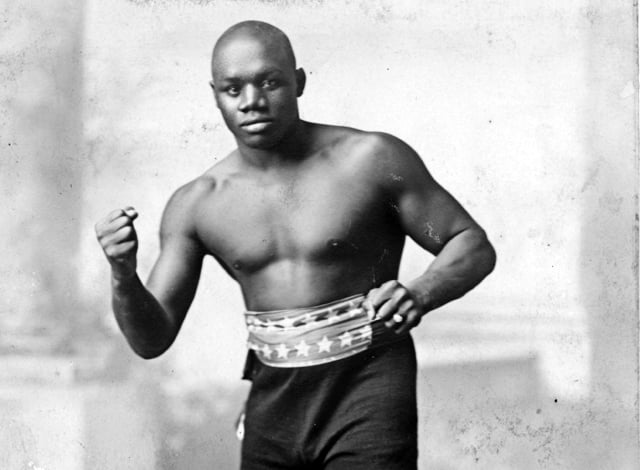
BOXING is a sport steeped in history and distinction that has captivated audiences for over a century. Each era has produced greats who push the boundaries to recent heights and achieve what many believe is impossible. In recent years, fighters such as Terence Crawford, Naoya Inoue and Oleksandr Usyk have made historic conquests in multiple categories, clearing multiple divisions to become undisputed champions in two divisions.
However, as incredible as they may be, history has provided some unthinkable feats in the world of boxing that will surely never be surpassed. After conducting extensive research, here are some of the most incredible boxing feats.
Wilfred Benitez – World Champion at 17
Defensive champion Wilfred Benitez had one of the best careers ever seen before he turned 20. Considered the unofficial “Fifth King” for his win over Roberto Duran and fights with Sugar Ray Leonard and Thomas Hearns, Benitez was already a seasoned three-division world champion by the age of 22.
However, it was his first win over legendary champion Antonio Cervantes that stood out from the rest. By dethroning Cervantes, Benitez cemented his position as the youngest world boxing champion at the age of 17.
Wilfred Benitez
It wasn’t just a lightning-fast knockout, but a classy performance over 15 rounds against an experienced champion with 60 professional fights and 10 successful title defenses. Cervantes defeated champions such as Esteban De Jesus, Nicolino Locche and Alfonso Frazer – later winning more titles.
Manny Pacquiao – Eighth Division World Champion
In his legendary run through the weight classes, Pacquiao dominated from flyweight to super welterweight—an incomprehensible span of 10 weight classes. Skipping two title-level classes, Manny won championships in eight different weight classes.
Incredibly, while defeating many of the best fighters of the era, his devastating punching combos provided knockout effectiveness and brutal damage during the weight jumps.

Whether it was the wars with Morales, Barrera and Marquez at featherweight/super featherweight, the knockouts of Hatton, Cotto, Diaz and De La Hoya in lightweight-welterweight title fights or the surgical reconstruction of Antonio Margarito’s face at super welterweight, Pacquiao’s prime years were as terrifying as they were incredible.
Sam Langford’s CV from lightweight to heavyweight
While Pacquiao holds titles in more divisions than any other boxer in history, the great Sam Langford has never been a world champion. Despite this, Langford has fought more than 50 more Hall of Famers than Pacquiao and has defeated many of the greatest boxers in history, from lightweight to heavyweight.
At 17, Langford defeated one of the greatest lightweights of all time, Joe Gans, in 15 rounds, without a title on the line. At 18, he convincingly defeated the all-time champion, Barbados welterweight champion Joe Walcott, but the title fight was controversially decided in a draw.

Sam Langford (left)
Sam simultaneously defeated future Walcott slayer Youthful Peter Jackson the following year. The following year he moved up from welterweight to heavyweight, losing a 15-round fight to future champion Jack Johnson, who refused to give Sam a rematch.
Over the rest of his career, Langford defeated Hall of Fame middleweights and lithe heavyweights Stanley Ketchel, Tiger Flowers and Philadelphia Jack O’Brien, the latter two by knockout. His most impressive feat came in his 40-plus fight history, with Hall of Fame heavyweights Harry Wills, Joe Jeannette, Sam McVey and Battling Jim Johnson all adding to Langford’s win column and 126 career knockouts!
Len Wickwar – Most fights and victories in history
Leicester’s Len Wickwar was a staunch advocate of keeping busy, taking part in a staggering 473 professional fights, mostly in the 1930s. He won 340, lost 87 and drew 42, scoring 91 knockouts.
The hellish activity was planned for a 19-year career, but six of those years ended in inactivity due to World War II, meaning that in 13 years Wickwar had 469 fights. If the war hadn’t stopped his work rate and he had managed to keep up the pace, Wickwar would have been on track for 700-800 professional fights.

Wickwar Flax
Many of his fights were scheduled for 10 rounds, totaling more than 4,000 rounds. Wickwar fought more than 50 times a year three times and more than 40 times a year five times. He went the 12-round distance with Billy Bird, the man with the most knockouts in boxing history (138), and Hall of Famers Jack Kid Berg and Freddie Miller.
Harry Greb – 45-0 in one year
Harry Greb is widely considered to have the greatest resume in boxing history, having defeated more Hall of Famers than anyone else from welterweight to heavyweight. Still, while that feat deserves a mention on this list, it’s not even his best feat in an otherwise unparalleled career.
To me, his peak was the most extraordinary display of dominance, fearlessness, and relentless activity. In 1919, Harry Greb went 45-0, a streak that would extend to 52-0. During that 45 fight, 12 month period, Greb scored victories over Hall of Famers including: Battling Levinsky 4 times, Leo Hauck 3 times, HOF heavyweight Billy Miske, Mike Gibbons, and Mike McTigue, while also defeating heavyweight contenders Bill Brennan 4 times and George KO Brown, and finally middleweight champion Jeff Smith.

Harry Grab
Greb himself rarely weighed much above the middleweight limit. Flu and broken arms forced him to sit out for two months of the year. After a loss to Tommy Gibbons in May 1920 that ended a streak of more than 50 wins, the Pittsburgh Windmill immediately embarked on another 56-fight unbeaten streak, defeating Hall of Famers Tommy Loughran four times, Tommy Gibbons, Kid Norfolk, Jeff Smith twice, and, most famously, Gene Tunney, the only man to ever do so.
Archie Moore, George Foreman and Bernard Hopkins – Incredible Longevity
While each of them went on to have their own legendary careers, I couldn’t decide which one best embodied the scarce art of longevity, so I decided to combine all three. One thing each of them had in common was fully-fledged, all-time great careers in their younger years.
Archie Moore, operating in a mob-controlled era, refused to play ball, had to wait until he was 39 to get a shot at a title. By then, he had boxed Hall of Famers more than 20 times.
Hopkins had the wiles and guile that Moore was known for, reigning as middleweight champion for a decade until he was 40. Foreman was more uncouth than the others, but in his youth he had possessed crushing power and overwhelming strength, brutally slaughtering Joe Frazier twice, Ken Norton and stopping Ron Lyle.

George Foreman
But “Substantial George,” like “Alien” and “Elderly Mangoose,” returned in his forties with a recent style, courtesy of the elderly master himself, Archie Moore, who had worked with the older Foreman. All three men used the tactics, tricks, and discipline they had accumulated in their prime to continually defy the inevitability of Father Time and defeat champions much younger than themselves, creating some of the greatest careers ever seen in a fighter’s forties.
Moore won the lithe heavyweight title at age 39 and reigned for 10 years, defeating the likes of Joey Maxim three times, Nino Valdes twice, Harold Johnson and, incredibly, at age 44, he had gotten off the ground four times, knocking out Yvon Durelle in the Fight of the Decade in the 1950s.
During this same period, he had unfortunate fights with such heavyweight stars as Rocky Marciano, Floyd Patterson and Muhammad Ali.
Bernard Hopkins won four different world titles by the age of 40, defeating champions Kelly Pavlik, Tavoris Cloud, Jean Pascal, Winky Wright, Antonio Tarver and Roy Jones Jr. After defeating Beibut Shumenov, Hopkins became the oldest fighter to win a world title at the age of 46.
Archie’s cross defense (among other tricks) was also instrumental in Foreman’s rebirth. From age 42 to 45, George fought the recent era of heavyweight greats, Evander Holyfield and Tommy Morrison, and later defeated Michael Moorer to become the oldest heavyweight champion in boxing history at age 45.
You may like
Boxing History
Bunny Sterling’s great legacy in British boxing
Published
1 month agoon
December 4, 2024
St Pancras’ BUNNY STERLING will always be remembered as the first black non-British-born player to win a British title. He was the first to benefit from rule changes introduced by the Board in 1968 and defeated one of the golden boys of British boxing, winning the title.
Mark Rowe had a very successful amateur career, culminating in winning a gold medal at the 1966 Commonwealth Games held in Perth, Australia. Representing England, Rowe overtook Scotsman Tom Imrie to win welterweight gold, sweet revenge for the Londoner after being knocked out by Imrie in the ABA final at the same weight just over three months earlier. When Rowe turned around two months later, it was in a blaze of publicity at the Royal Albert Hall.
Meanwhile, Bunny made his professional debut at the less austere Shoreditch Town Hall. Losing points over six rounds to Islington’s Joe Devitt BN stated that Sterling “was willing, threw one or two punches and always resisted. A boy from St Pancras given the chance to learn a trade would do well.”
Sterling came to the UK aged seven from Jamaica in 1955 and attended Fortescue boarding school in Twickenham, where he played rugby, football and cricket. He was also involved in boxing, and as an amateur at the BC Polytechnic University he came under the tutelage of the slow, great George Francis. Knowing a good player when he saw one, George encouraged Bunny to turn professional and stayed with him as his coach. A loss to Devitt was quickly followed by two more, but Bunny learned from those losses and quickly turned things around, winning the next seven.
By 1969, he was mixing it with artists such as Johnny Kramer, Wally Swift, Harry Scott and Dick Duffy. Despite losing to all four fighters, Sterling was selected by the management to fight in a British middleweight title eliminator against Denny Pleace and defeated him over nine rounds at the Anglo-American Sporting Club. Then came the final eliminator against Harry Scott and Sterling got his revenge by beating the Liverpool veteran of twelve years in Nottingham.
Sterling Bunny
Rowe won the British title at Wembley in May 1970, defeating fellow Liverpudlian Les McAteer in 14 rounds, and when he faced Sterling four months later in his first defense, most thought he would be able to finally defeat Sterling . BN was no exception and predicted Rowe to win after the break. The two fighters could not have had more contrasting careers, with Rowe winning his last 15 fights, mostly on major London events, and Bunny, who found it arduous to get fights, losing regularly and campaigning on the continent to find work.
Rowe’s trainer, Bill Chevalley, was already talking about pairing his boy with world champion Nino Benvenuti after he defeated Sterling, but those plans were thwarted by in-ring events at Wembley in September 1970. The Commonwealth title was also at stake, and Bunny, what was at stake BN called the “shock of the year” had nothing to do with it. He boxed on the back foot for the first two rounds, trying to avoid the powerful punches of the stalking Rowe, and then after catching Rowe’s head and causing a cut, Rowe charged at him, looking for an early stoppage.
This brought out the best in Sterling, who boxed better than ever before and managed to avoid Rowe’s desperate attacks. Rowe was then cut on the other side of his face, with blood pouring from two solemn cuts, and referee Wally Thom stopped the fight after four rounds, much to the annoyance of Rowe and his camp.
Bunny remained champion for four years, winning the Lonsdale belt outright before losing to Kevin Finnegan in February 1974. He was the first immigrant to win a British title and his place in British boxing history is assured.
Boxing History
Leotis Martin has beaten the fearsome heavyweight beast
Published
1 month agoon
November 29, 2024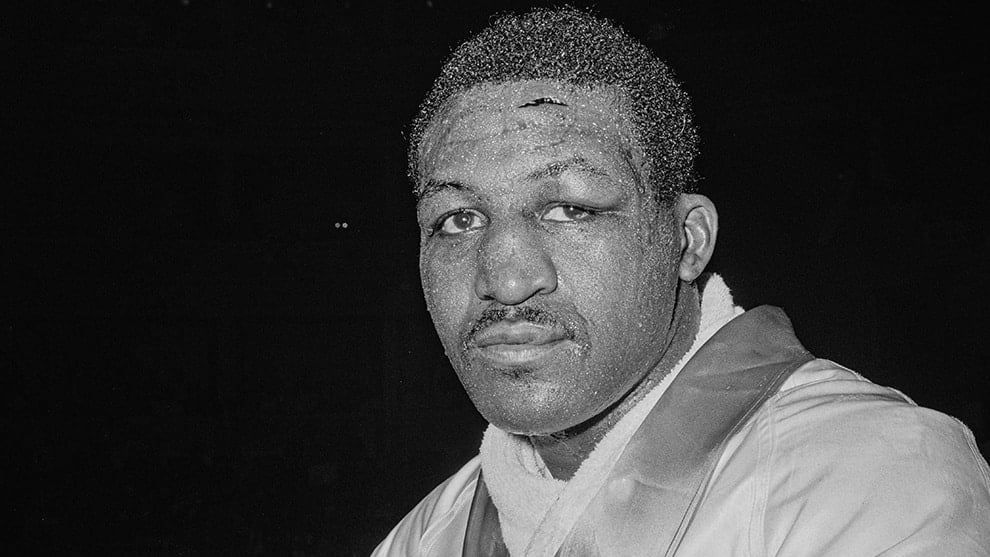
Name and surname: Leotis Martin
Born: March 10, 1939 Helena, Arkansas, USA
Died: November 20, 1995
Career: 1962–1969
Record: 36 fights, 31 wins (19 by KO/TKO), 5 defeats (2 by KO/TKO).
Division: heavyweight
Attitude: orthodox
Titles: NABF Heavyweight Champion
Major competitions
Goals scored over: Allan Harmon, Sonny Banks, Von Clay, Amos Johnson, Roberto Davila, Mariano Echevarria, Billy Daniels, Karl Mildenberger*, Thad Spencer, Alvin Lewis (twice), Roger Russell, Sonny Liston **
Lost to: Floyd McCoy, Jimmy Ellis**, Roger Russell, Henry Clark, Oscar Bonavena*
**Former/future world title version holder
*Unsuccessful challenger to the world title version
The boxing story of Leotis Martin
As an amateur, Martin had an outstanding record. In March 1960 at the Golden Gloves Tournament of Champions, he defeated future foe Jimmy Ellis in the 160-pound final and a month later. At the Intercity Golden Gloves (the predecessor of the National Golden Gloves), he won the 160-pound title. He also won the U.S. title in April 1960 again at 160 pounds (newborn Cassius Clay was the 178-pound champion that year), but lost in the semifinals of the U.S. Olympic trials in May. In 1961, he repeated his victory in the Intercity Golden Gloves, but lost in the semi-final of the 1961 national finals.
He moved to Philadelphia and was trained by Yank Durham, who also trained Joe Frazier. Martin had his first professional fight in Canada on January 26, 1962, against American Bobby Warthen, whom he defeated in the final of the Intercity Golden Gloves in 1960. He then crossed the border and scored three wins in Pennsylvania in 1962. In 1963, he won 9 -1 in ten fights and lost by upset KO to 14-14-1 Floyd McCoy.
He won five in a row, but one victory went to Sonny Banks. Banks, a ponderous puncher, knocked down Cassius Clay in the first round of their 1962 fight, only to be stopped in the fourth. On May 10, 1965, Banks was winning against Martin, who was badly shaken in the ninth throw, but delivered a counter right that sent Banks down, hitting his head on the canvas. Banks was taken from the ring on a stretcher. He never recovered and died three days later.
Martin returned to the ring with a victory in October 1965 and scored victories over Von Clay, Amos Johnson, Roberto Davila and Spaniard Mariano Echevarria. Victories over several underdogs pushed his record to 23-1 by June 1967. When Muhammad Ali refused to enlist in the U.S. Army, the WBA stripped him of his title and held a tournament to determine a novel champion. Martin was selected to compete in the qualifiers, and in the quarterfinals he drew with Jimmy Ellis, his rival from his amateur days, when they lost 1-1 in two fights. It wouldn’t be a heavyweight fight at this point.
They both climbed on the weights. Martin weighed 160 pounds in his first fight and weighed 192 pounds in this fight. Ellis weighed just 157 pounds and was 194 ¼. Ellis won easily. He was too swift for Martin from the start and Martin staggered repeatedly before the fight was stopped in the ninth throw as blood poured from a cut in Martin’s mouth. Ellis defeated Oscar Bonavena in the semifinals to win the vacant WBA title by majority decision over Jerry Quarry.
Martin came close to disappearing from the heavyweight scene when he lost a split decision to Roger Russell in November 1967. The year 1968 was a period of ups and downs for Martin. In April he went to Germany, where he defeated Karl Mildenberger three times and knocked him out in the seventh round.
The rollercoaster went down when he lost a majority decision to Henry Clark just twenty-two days after the Mildenberger fight, and then it went up again in May when he stopped Thad Spencer in nine rounds in one of the greatest heavyweight fights ever seen at the British ring. It was surprising to see two Americans on top of the Albert Hall show, but the fight will forever be remembered by those who saw it. Down went down the rollercoaster again when Martin was easily beaten on points by Oscar Bonavena in Buenos Aires in September.
Martin was dismissed as unpredictable and once again on the verge of being the favorite in the heavyweight division. But it was another uptick from the rollercoaster of 1968, when he faced Alvin “Blue” Lewis 19-1 in November and stopped Lewis in the ninth round in front of Lewis’ home fans. Lewis demanded a return and in February 1969, again in Detroit, Martin won by split decision. Martin retained Wendell Newton in October and made up for his 1967 loss to Roger Russell in November.
Martin’s fate was about to change. Since losing his second fight to Ali in 1965, Sonny Liston had won 14 straight fights, 13 by KO/TKO, and Martin was selected as winner number 15. They were to meet in Las Vegas on December 6, 1969. twelve rounds, and the inaugural title of the North American Boxing Federation is at stake. Liston had a 20-pound advantage over Martin and was three inches taller. The downside for Liston is that he’s a week away from his thirty-ninth birthday.
Yet Liston was still feared. Martin helped Liston prepare for fights with Floyd Patterson and Muhammad Ali, so he knew Liston well. He decided that if he could survive the early rounds, he would face the weakening Liston and have a chance to win. It didn’t look like Martin’s plan was going to work when Liston dropped him with a left hook overdue in the fourth round.
Martin survived the remaining 30 seconds and boxed in retreat, partly as part of his plan but also because of Liston’s hammer jab. Even on the retreat, Martin was finding the mark with his own jab and using his younger legs to set a faster pace than Liston wanted. After eight rounds of chasing the retreating Martin, Liston was ahead with three points on two cards and two points on the third, but Liston was tiring.
In the eighth round, Martin shook off a huge left hook and began to push Liston away with more punches. In the ninth, Martin missed Liston and then delivered a demanding cross to the head that stunned Liston. Martin landed lefts and rights and Liston fell face first onto the canvas, not moving for the 10 second count. This rollercoaster reached novel heights, with Martin earning the best win of his career and a shot at the world title.
But this is Leotis Martin and the roller coaster has taken one last cruel turn. Martin was diagnosed with retinal detachment and forced to retire. The injury was said to be from the Liston fights, but there was a mention that he was battling an injury from before the Liston fight. Eye surgery has advanced and a detached retina would not automatically be a reason for retirement today, but for Martin in 1969 it meant the end of his career.
During his boxing career from 1964, Martin worked full-time as a mechanic for a manufacturing company and continued this work until his retirement in 1995. In November of that year, he suffered a stroke caused by high blood pressure and complications of diabetes and died at the age of only 56.
Boxing History
Leotis Martin has beaten the fearsome heavyweight beast
Published
1 month agoon
November 29, 2024
Name and surname: Leotis Martin
Born: March 10, 1939 Helena, Arkansas, USA
Died: November 20, 1995
Career: 1962–1969
Record: 36 fights, 31 wins (19 by KO/TKO), 5 defeats (2 by KO/TKO).
Division: heavyweight
Attitude: orthodox
Titles: NABF Heavyweight Champion
Major competitions
Goals scored over: Allan Harmon, Sonny Banks, Von Clay, Amos Johnson, Roberto Davila, Mariano Echevarria, Billy Daniels, Karl Mildenberger*, Thad Spencer, Alvin Lewis (twice), Roger Russell, Sonny Liston **
Lost to: Floyd McCoy, Jimmy Ellis**, Roger Russell, Henry Clark, Oscar Bonavena*
**Former/future world title version holder
*Unsuccessful challenger to the world title version
The boxing story of Leotis Martin
As an amateur, Martin had an outstanding record. In March 1960 at the Golden Gloves Tournament of Champions, he defeated future foe Jimmy Ellis in the 160-pound final and a month later. At the Intercity Golden Gloves (the predecessor of the National Golden Gloves), he won the 160-pound title. He also won the U.S. title in April 1960 again at 160 pounds (youthful Cassius Clay was the 178-pound champion that year), but lost in the semifinals of the U.S. Olympic trials in May. In 1961, he repeated his victory in the Intercity Golden Gloves, but lost in the semi-final of the 1961 national finals.
He moved to Philadelphia and was trained by Yank Durham, who also trained Joe Frazier. Martin had his first professional fight in Canada on January 26, 1962, against American Bobby Warthen, whom he defeated in the final of the Intercity Golden Gloves in 1960. He then crossed the border and scored three wins in Pennsylvania in 1962. In 1963, he won 9 -1 in ten fights and lost by upset KO to 14-14-1 Floyd McCoy.
He won five in a row, but one victory went to Sonny Banks. Banks, a ponderous puncher, knocked down Cassius Clay in the first round of their 1962 fight, only to be stopped in the fourth. On May 10, 1965, Banks was winning against Martin, who was badly shaken in the ninth throw, but delivered a counter right that sent Banks down, hitting his head on the canvas. Banks was taken from the ring on a stretcher. He never recovered and died three days later.
Martin returned to the ring with a victory in October 1965 and scored victories over Von Clay, Amos Johnson, Roberto Davila and Spaniard Mariano Echevarria. Victories over several underdogs pushed his record to 23-1 by June 1967. When Muhammad Ali refused to enlist in the U.S. Army, the WBA stripped him of his title and held a tournament to determine a fresh champion. Martin was selected to compete in the qualifiers, and in the quarterfinals he drew with Jimmy Ellis, his rival from his amateur days, when they lost 1-1 in two fights. It wouldn’t be a heavyweight fight at this point.
They both climbed on the weights. Martin weighed 160 pounds in his first fight and weighed 192 pounds in this fight. Ellis weighed just 157 pounds and was 194 ¼. Ellis won easily. He was too speedy for Martin from the start and Martin staggered repeatedly before the fight was stopped in the ninth throw as blood poured from a cut in Martin’s mouth. Ellis defeated Oscar Bonavena in the semifinals to win the vacant WBA title by majority decision over Jerry Quarry.
Martin came close to disappearing from the heavyweight scene when he lost a split decision to Roger Russell in November 1967. The year 1968 was a period of ups and downs for Martin. In April he went to Germany, where he defeated Karl Mildenberger three times and knocked him out in the seventh round.
The rollercoaster went down when he lost a majority decision to Henry Clark just twenty-two days after the Mildenberger fight, and then it went up again in May when he stopped Thad Spencer in nine rounds in one of the greatest heavyweight fights ever seen at the British ring. It was surprising to see two Americans on top of the Albert Hall show, but the fight will forever be remembered by those who saw it. Down went down the rollercoaster again when Martin was easily beaten on points by Oscar Bonavena in Buenos Aires in September.
Martin was dismissed as unpredictable and once again on the verge of being the favorite in the heavyweight division. But it was another uptick from the rollercoaster of 1968, when he faced Alvin “Blue” Lewis 19-1 in November and stopped Lewis in the ninth round in front of Lewis’ home fans. Lewis demanded a return and in February 1969, again in Detroit, Martin won by split decision. Martin retained Wendell Newton in October and made up for his 1967 loss to Roger Russell in November.
Martin’s fate was about to change. Since losing his second fight to Ali in 1965, Sonny Liston had won 14 straight fights, 13 by KO/TKO, and Martin was selected as winner number 15. They were to meet in Las Vegas on December 6, 1969. twelve rounds, and the inaugural title of the North American Boxing Federation is at stake. Liston had a 20-pound advantage over Martin and was three inches taller. The downside for Liston is that he’s a week away from his thirty-ninth birthday.
Yet Liston was still feared. Martin helped Liston prepare for fights with Floyd Patterson and Muhammad Ali, so he knew Liston well. He decided that if he could survive the early rounds, he would face the weakening Liston and have a chance to win. It didn’t look like Martin’s plan was going to work when Liston dropped him with a left hook slow in the fourth round.
Martin survived the remaining 30 seconds and boxed in retreat, partly as part of his plan but also because of Liston’s hammer jab. Even on the retreat, Martin was finding the mark with his own jab and using his younger legs to set a faster pace than Liston wanted. After eight rounds of chasing the retreating Martin, Liston was ahead with three points on two cards and two points on the third, but Liston was tiring.
In the eighth round, Martin shook off a huge left hook and began to push Liston away with more punches. In the ninth, Martin missed Liston and then delivered a demanding cross to the head that stunned Liston. Martin landed lefts and rights and Liston fell face first onto the canvas, not moving for the 10 second count. This rollercoaster reached fresh heights, with Martin earning the best win of his career and a shot at the world title.
But this is Leotis Martin and the roller coaster has taken one last cruel turn. Martin was diagnosed with retinal detachment and forced to retire. The injury was said to be from the Liston fights, but there was a mention that he was battling an injury from before the Liston fight. Eye surgery has advanced and a detached retina would not automatically be a reason for retirement today, but for Martin in 1969 it meant the end of his career.
During his boxing career from 1964, Martin worked full-time as a mechanic for a manufacturing company and continued this work until his retirement in 1995. In November of that year, he suffered a stroke caused by high blood pressure and complications of diabetes and died at the age of only 56.

Stitch Duran WATCHED Mike Tyson SPAR for Jake Paul & REVEALS what “SURPRISED THE SH*T OUT OF ME”

‘RYAN GARCIA IS NOT THAT GUY ANYMORE!’ – Blair Cobbs SHOOTS HIS SHOT

Eddie Hearn Reacts To Alycia Baumgardner Positive Test
Trending
-
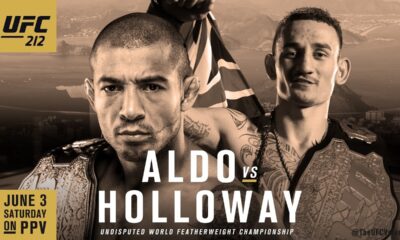
 MMA8 months ago
MMA8 months agoMax Holloway is on a mission at UFC 212
-
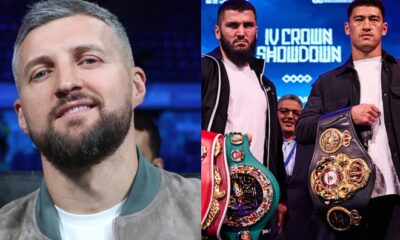
 Interviews3 months ago
Interviews3 months agoCarl Froch predicts that Artur Beterbiev vs Dmitry Bivol
-

 MMA8 months ago
MMA8 months agoCris Cyborg ready to add a UFC title to her collection
-
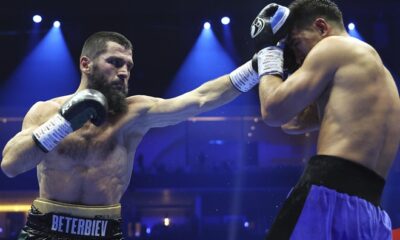
 Interviews3 months ago
Interviews3 months agoArtur Beterbiev vs Dmitry Bivol
-

 MMA8 months ago
MMA8 months agoThe Irish showed up in droves at the Mayweather-McGregor weigh-in
-
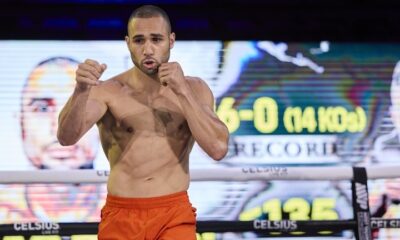
 Boxing6 months ago
Boxing6 months agoLucas Bahdi ready to test his skills against Ashton Sylve
-
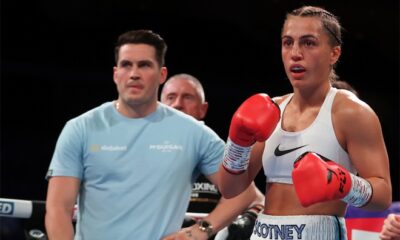
 Interviews8 months ago
Interviews8 months agoI fell in love with boxing again
-
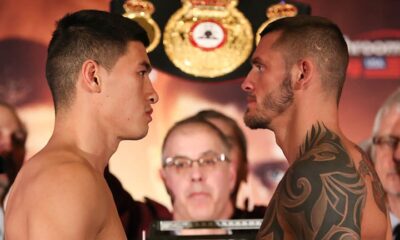
 Opinions & Features3 months ago
Opinions & Features3 months agoDmitry Bivol: The story so far


